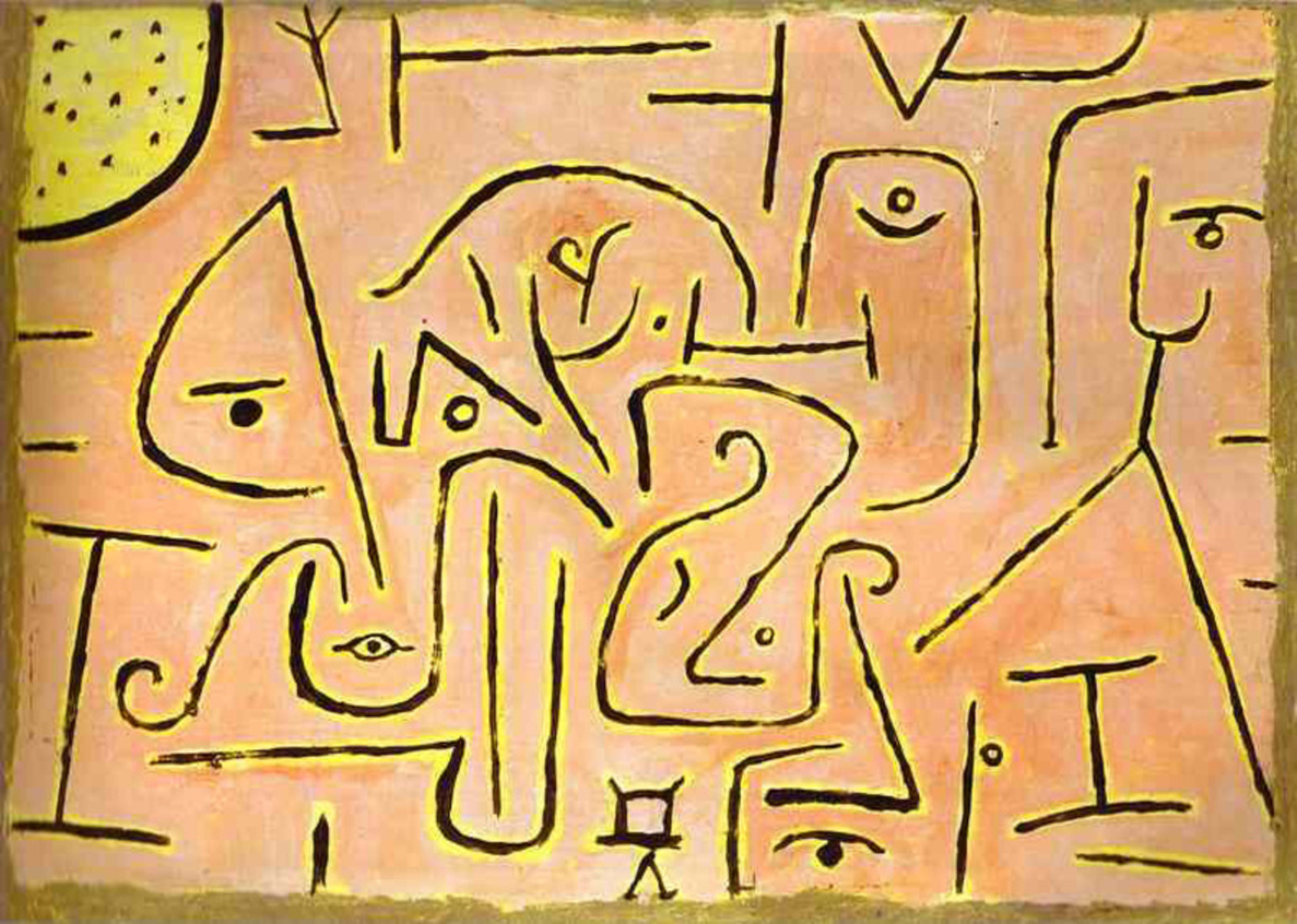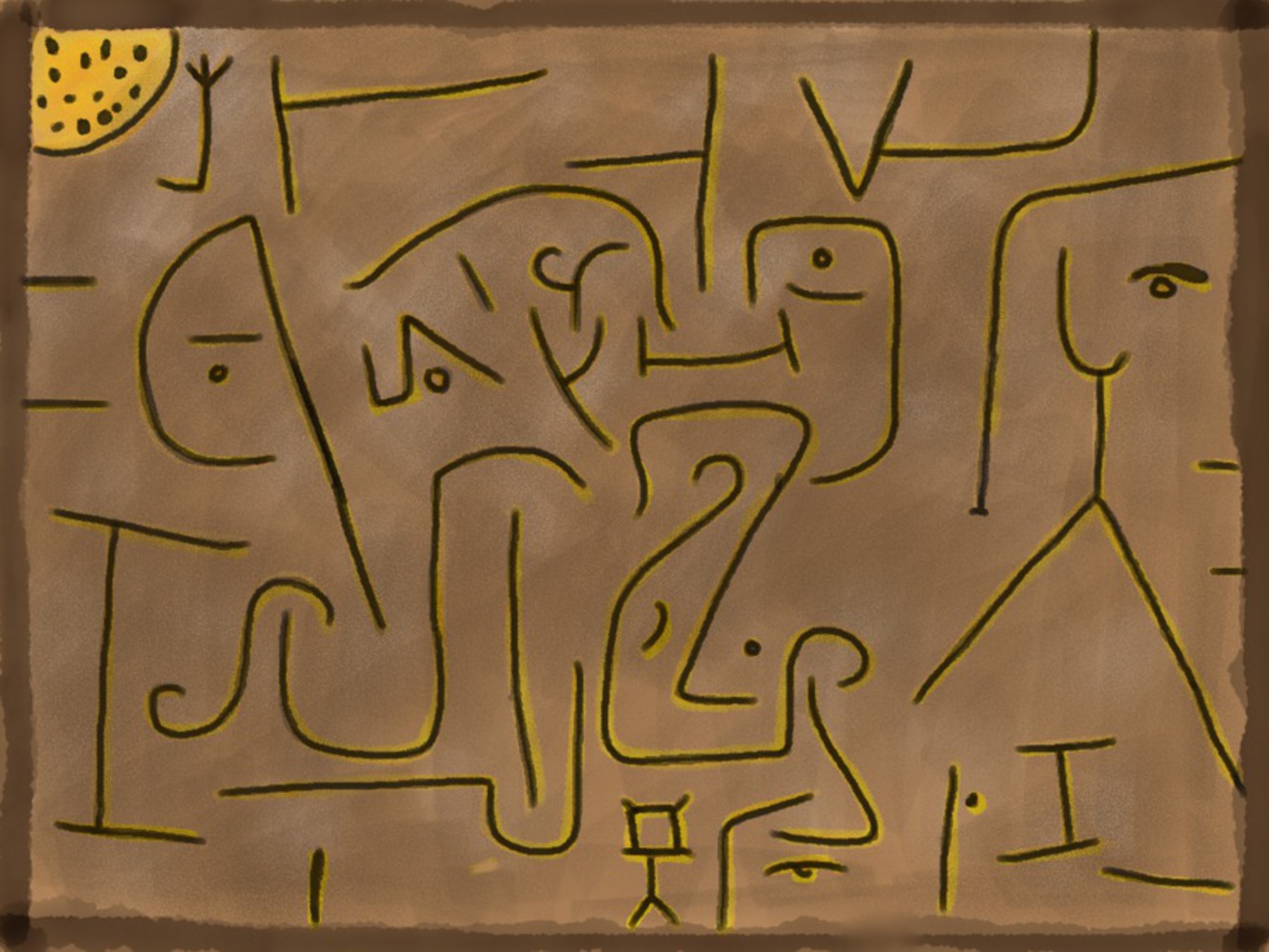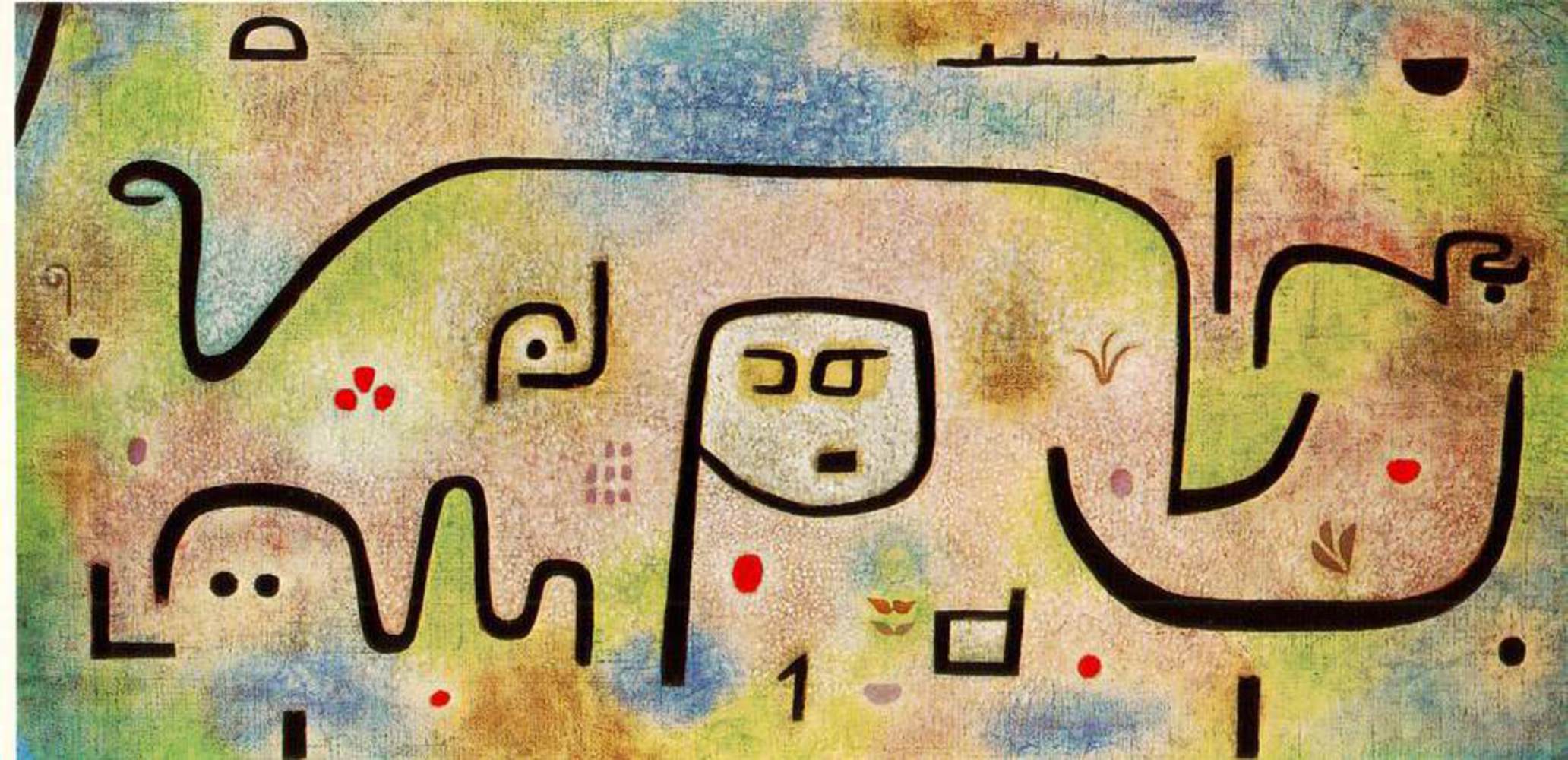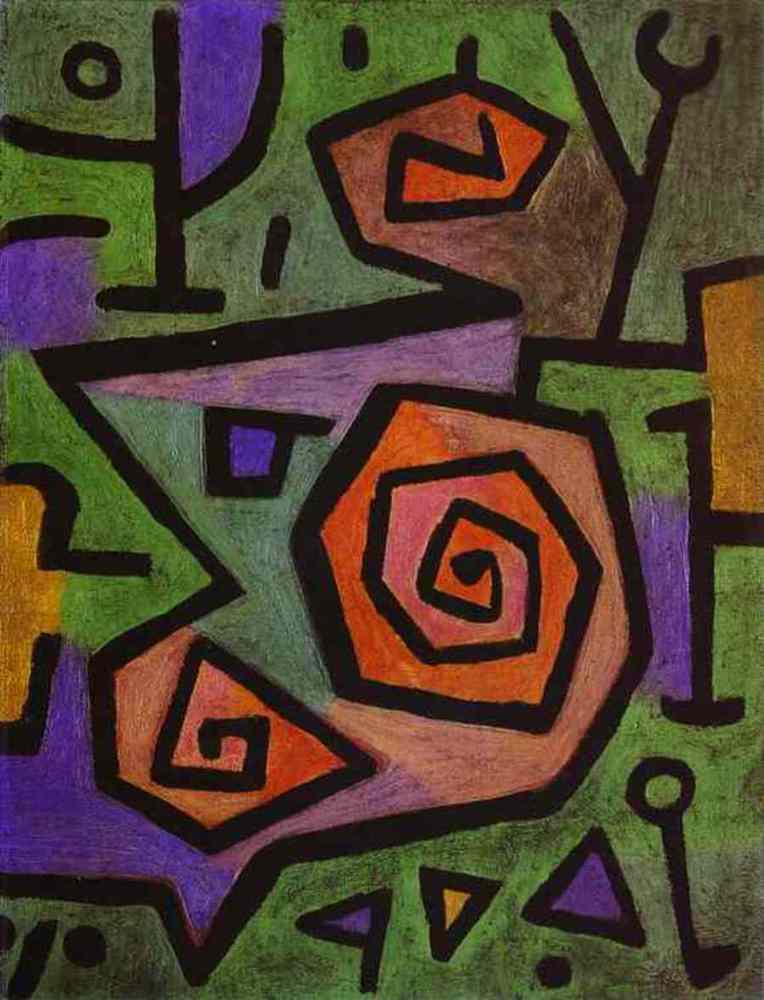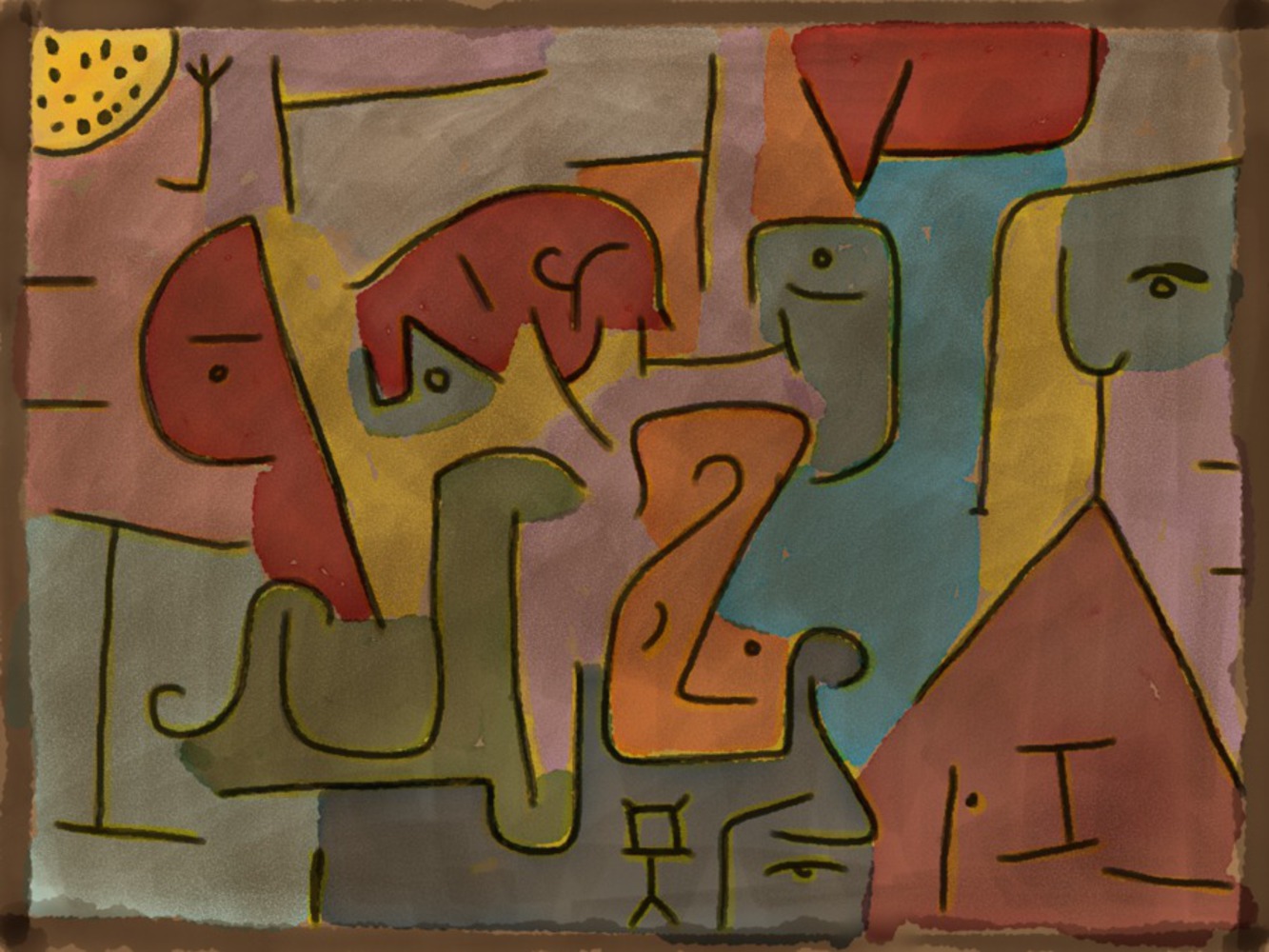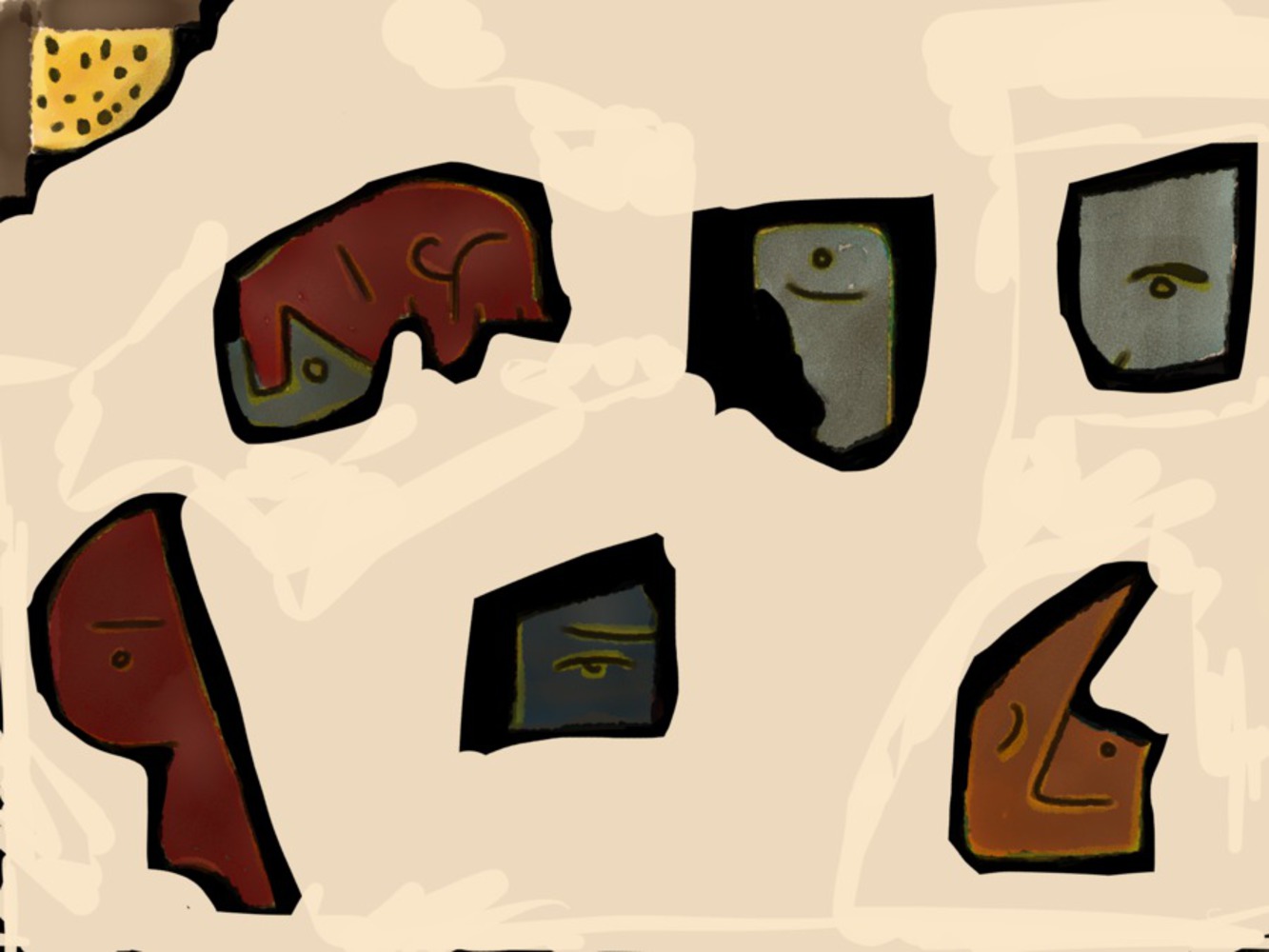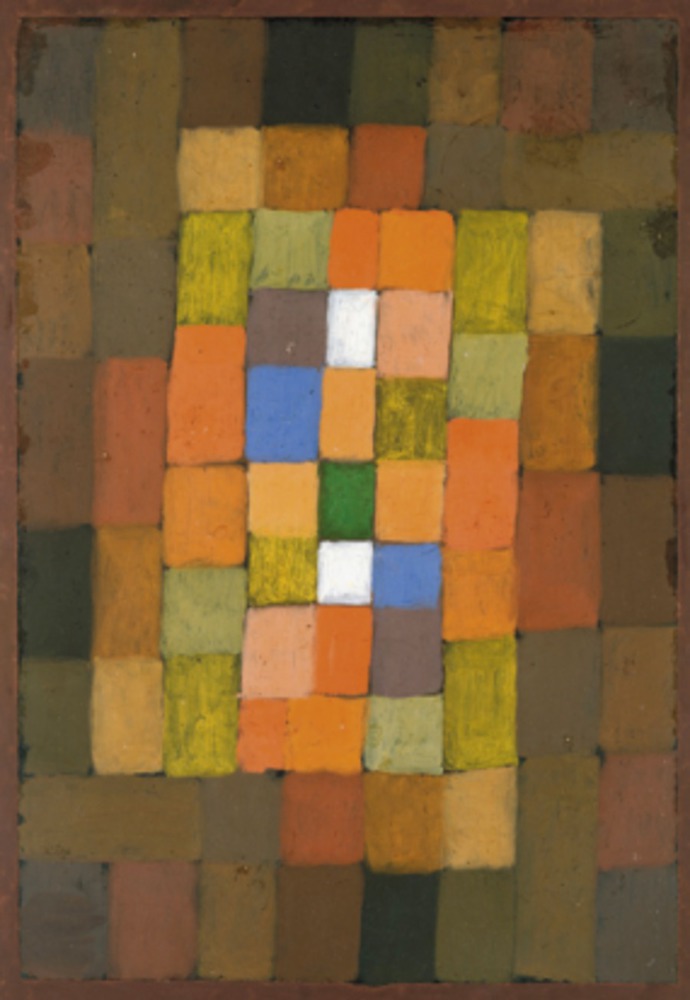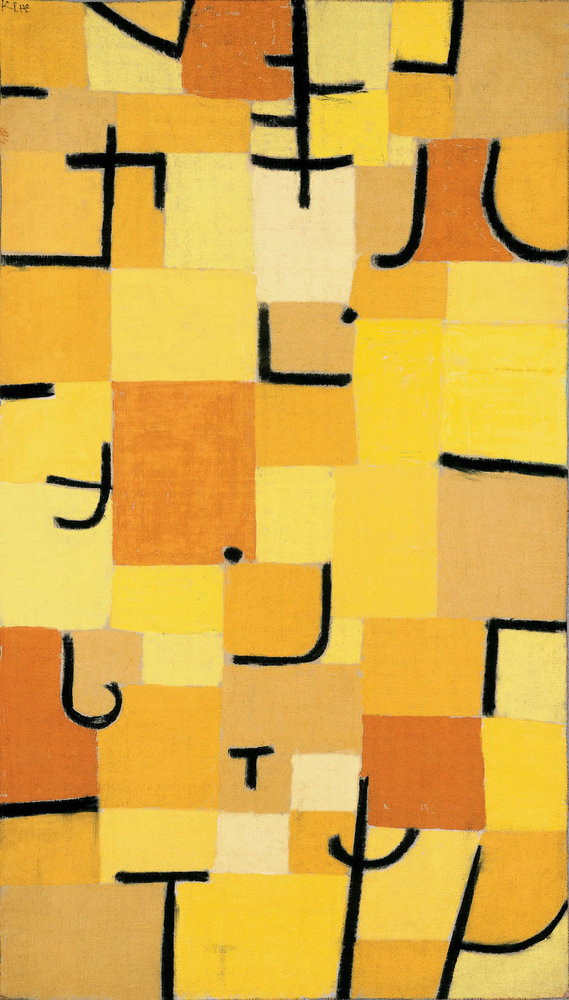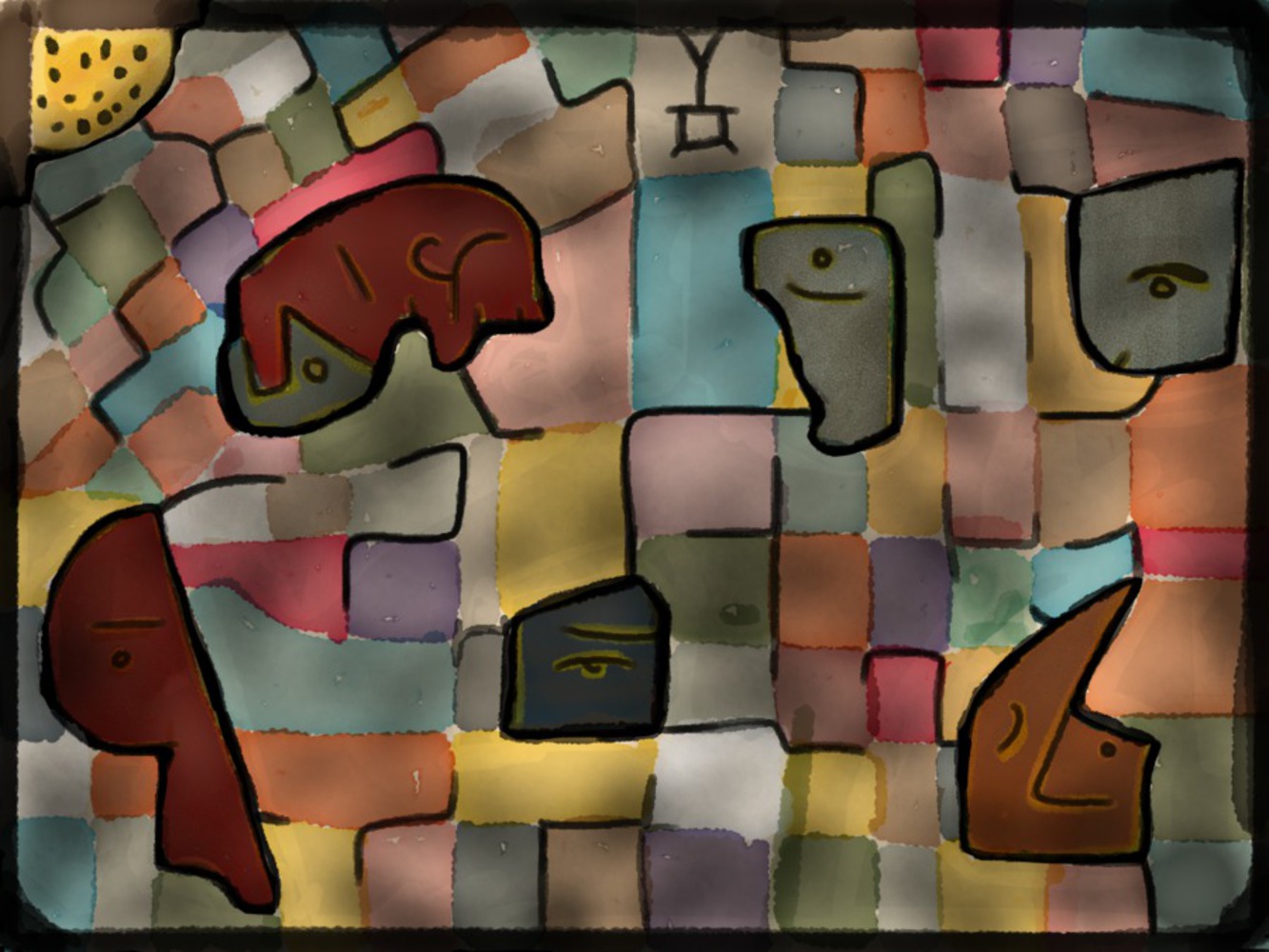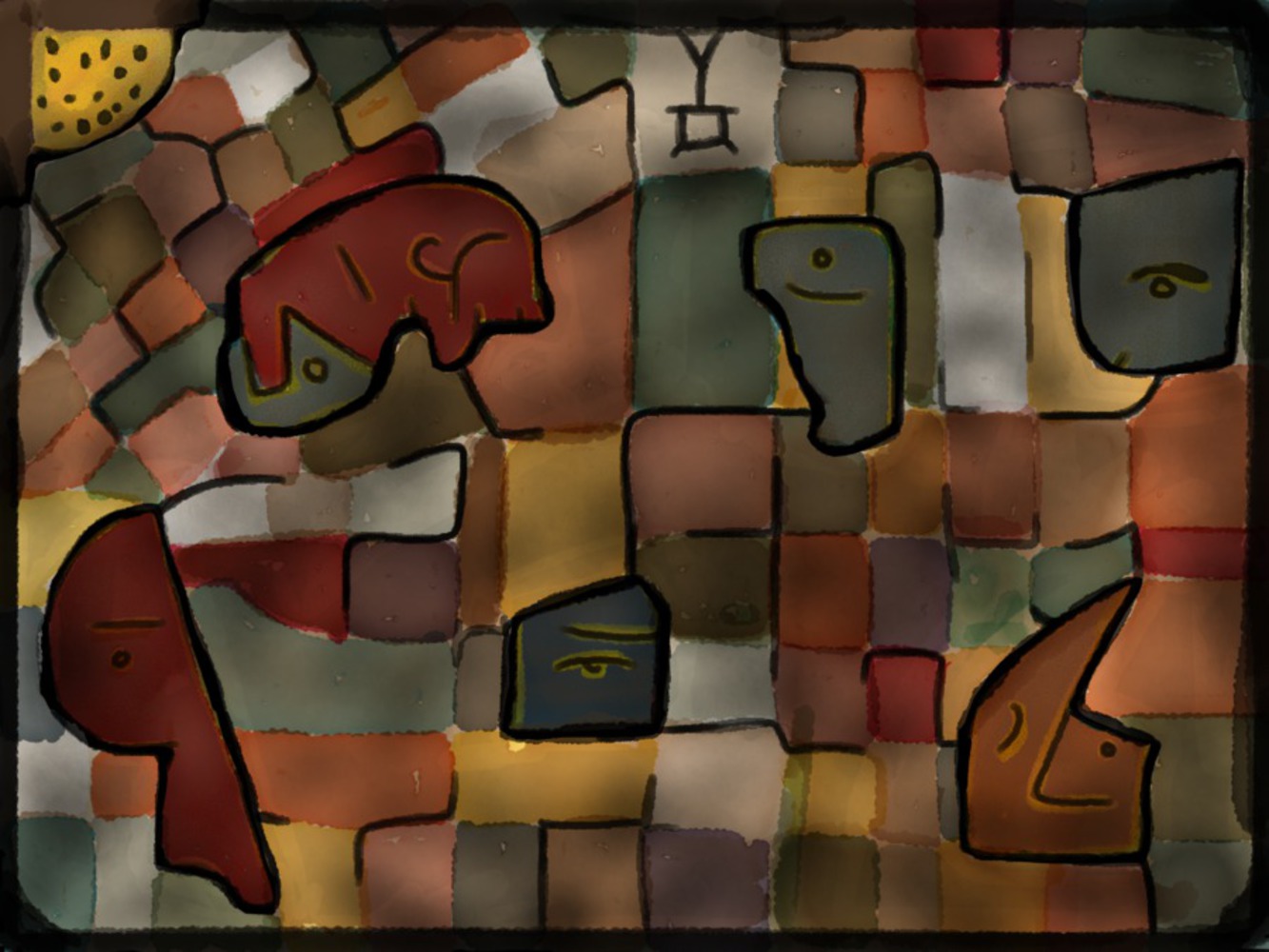Paul Klee
Paul Klee was a German painter with an incredibly interesting background. (Not even mentioning the war,) here's the short of it: starting out with black and white abstract depictions of scenes (no greyscale whatsoever), he notably commented on never needing to use color before eventually focusing on color more with his work than anything else. After a trip to Tunisia, he began to create artwork that involved beautiful color palettes expressed through glass-like mosaic squares. Then, as his health worsened and he began to face death, his work darkened with it.
